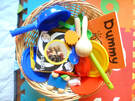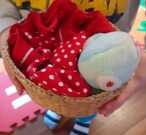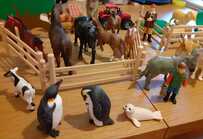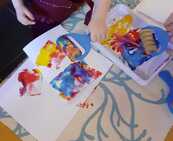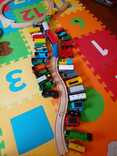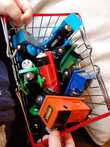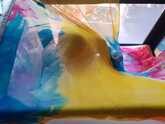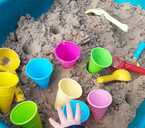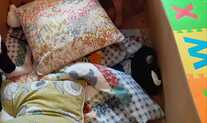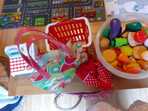Little Acorns at Home
Having your children at home whilst you may be working from home can be interesting, fun and a challenge. Fun is good! Laughing is good! It will be a good idea to be realistic about what can be achieved in your time together, you can't do everything. But certainly do not feel bad about having fun! Establish a routine over the day for snacks, meal times, play on your own times and play together times, rest times, TV times and screen times. When children know that there will be time together, or that screen tie is scheduled, they will be less demanding. You could make a paper plate 'clock' with a hand saying where they are. You might like to use a Now Next Then card, so that children can relax knowing that they are playing on their own for a while, and that you will be playing with them 'Next'. We can help parents to set this up. For older children add a time when they will be playing on their own allowing you to have some time to work with little interruption. This page gives you some ideas as to how you can organise play to encourage children to be creative, independent and confident with their own ideas.
|
What is a Schema?
Schemas are usually described as repeated patterns of behaviour, that we see when watching children play and investigate their surroundings. They can be referred to as their ‘interests’ too, and it shows how they learn. Some schemas you might see include: Transporting: carrying toys from one place to another in a truck, pram, bag, purse, box , wheelbarrow or hands Positioning: choosing to line /position /sit themselves/toys very carefully, cars, people, animals, dinosaurs, bricks, sorting and separating, being very specific, correcting, Orientation: looking at things from different angles using binoculars, magnifiers, lenses, kaleidoscopes, lying down to draw Enclosure: making fences and borders, with bricks, blocks, crates, paints, cutting, sticking, chalks, paper Enveloping: or wrapping, toys and themselves in material , paper, scarves, play silks, dressing up clothes, envelopes Rotation: keys, knobs, buttons, wheels, taps , cogs, seeing how they work, cars, trucks, rolling, rolling toys and parts Transforming: mixing paint, mud pies, mixing sand and water, interest in how ice melts and freezes Containing: climbing into boxes, filing boxes, pockets, containers, prams, buckets, handbags, suitcases, trucks, wheelbarrows Connecting: joining with glue string, duplo, waffle, stickle , mega bricks, tape, Trajectory: dropping food/bowl/cups from highchair, swinging, kicking balls, throwing toys/items, pulling out tissues, running backwards and forwards, building/knocking down towers Going through a boundary: threading beads, crawling in tunnels, posting, weaving, latching, locking, doors, sieving Core and radial: drawing circles and lines, sunshine, making birthday cakes with candles/hedgehogs/dragons in dough/clay |
Story Time
Mr Gumpy's Outing -
|
Stanley's Stick -
|
Owl Babies -
|
https://www.youtube.com/ - Joe Wicks The Body Coach.
https://www.bbc.co.uk/cbbc - CBBC
https://www.bbc.co.uk/cbeebies - Cbeebies
https://www.nhm.ac.uk/visit/virtual-museum.html?gclid=Cj0KCQjw2PP1BRCiARIsAEqv-pQV5s7i4iPA6jNVbWfdmZBawbXWi-Inh3pyN7vOwRHpOp6hOnl5mfQaAlK1EALw_wcB - National History Museum Virtual
https://www.nationalgallery.org.uk/visiting/virtual-tours - National Gallery Virtual Tours (London)
https://www.nhm.ac.uk/events/homework-club.html?utm_source=tw-image-post-20200111 learn&utm_medium=social&utm_campaign=schools - National History Museum learn homework.
https://www.bbc.co.uk/cbbc - CBBC
https://www.bbc.co.uk/cbeebies - Cbeebies
https://www.nhm.ac.uk/visit/virtual-museum.html?gclid=Cj0KCQjw2PP1BRCiARIsAEqv-pQV5s7i4iPA6jNVbWfdmZBawbXWi-Inh3pyN7vOwRHpOp6hOnl5mfQaAlK1EALw_wcB - National History Museum Virtual
https://www.nationalgallery.org.uk/visiting/virtual-tours - National Gallery Virtual Tours (London)
https://www.nhm.ac.uk/events/homework-club.html?utm_source=tw-image-post-20200111 learn&utm_medium=social&utm_campaign=schools - National History Museum learn homework.
| ||||||||


